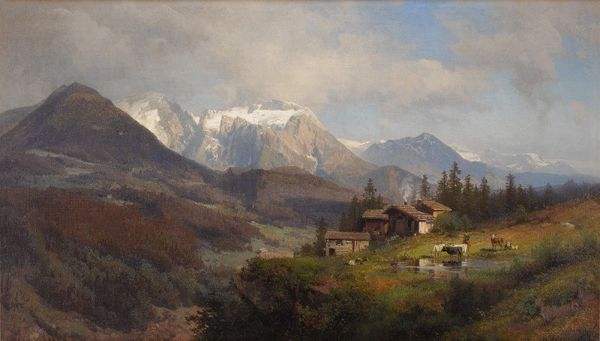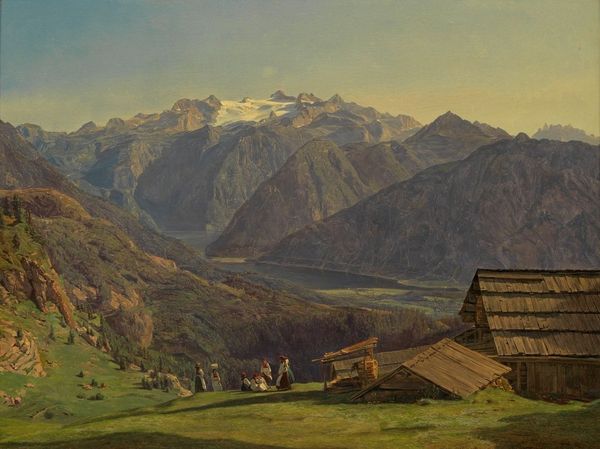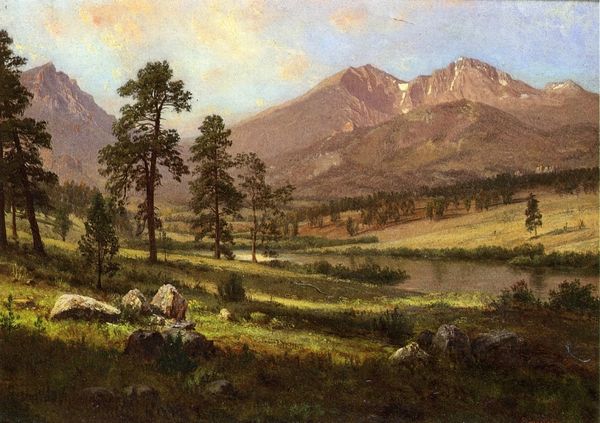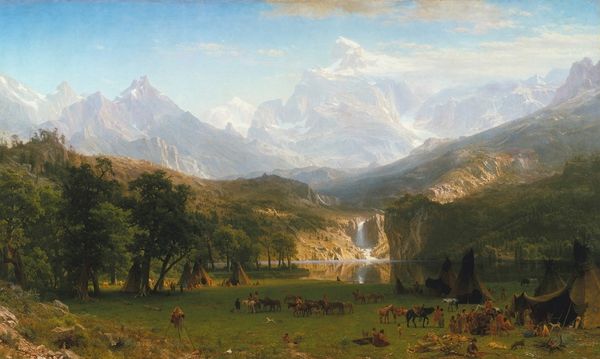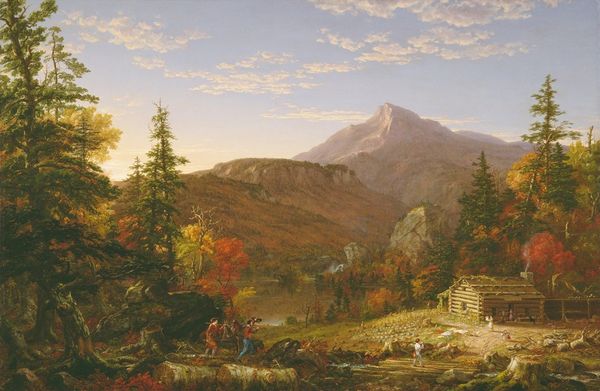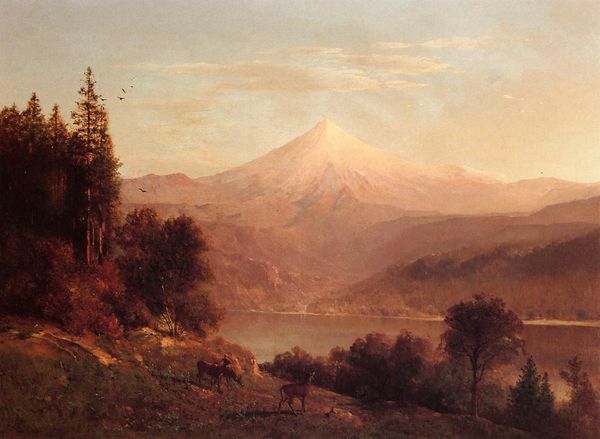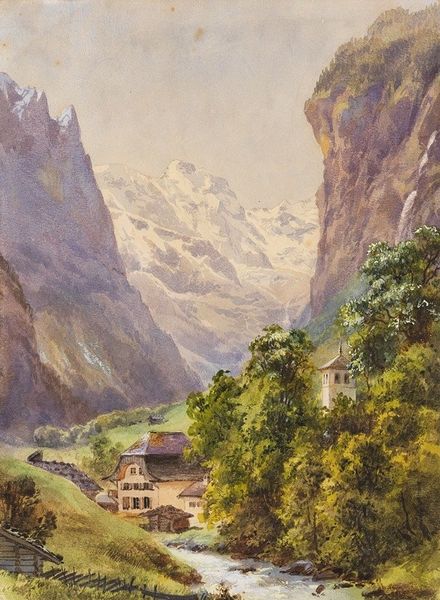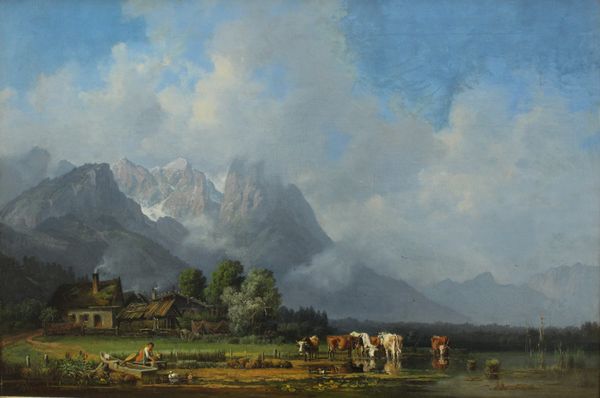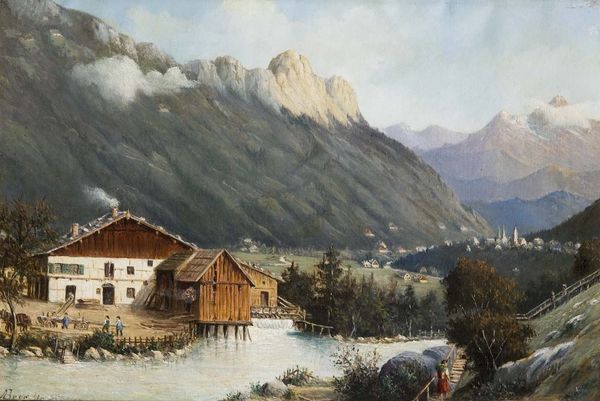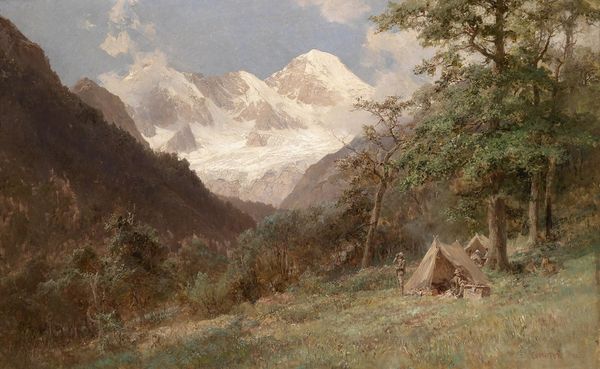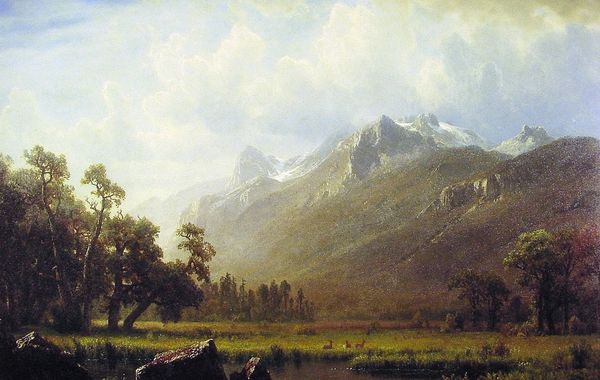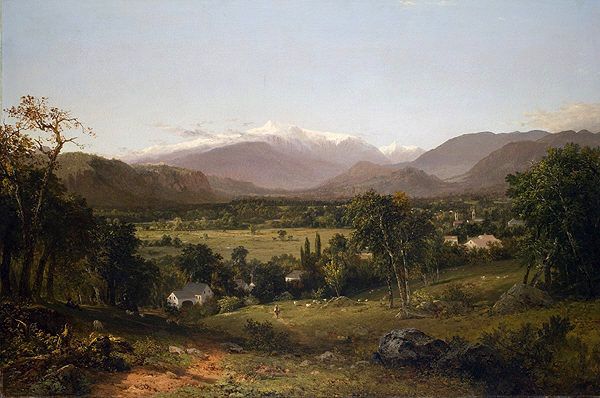
Copyright: Public Domain: Artvee
Editor: This watercolor piece, "Hoher G\u00f6ll, Berchtesgaden," painted in 1878 by Edward Theodore Compton, is just stunning! The light on the mountains is captivating. How do you read the materials and the choices that were made by the artist? Curator: Notice how Compton used watercolor and oil *en plein air*. It speaks to a particular approach to landscape production, emphasizing both observation and the physicality of the site. Consider the labour involved in transporting these materials and setting up *in situ*. The final aesthetic speaks less to bourgeois artistry and more towards an artistic process of direct and involved extraction, in many ways aligned to local industry. Editor: Extraction, in that sense? That's unexpected! I'm so used to thinking about romanticism in terms of individual genius. Curator: But even genius requires materials! This view, chosen and rendered in watercolor and oil, highlights specific geographical features associated with regional commerce. Those houses there represent the intersection between labor and the natural landscape. We are shown what they *do*. Editor: So you are not so interested in the composition or use of color to interpret how the art functions? Curator: My focus is more towards how Compton translates an external landscape, in real time and labour, using certain consumable goods such as paints, brushes and canvas to produce an artistic rendering to show his client. That action right there explains everything. Editor: I see what you mean. Thinking about the artwork as a product of labour and material choices really shifts the focus. Thanks for pointing that out! Curator: Indeed. Recognizing those systems is crucial for appreciating this painting beyond just a pretty mountain.
Comments
No comments
Be the first to comment and join the conversation on the ultimate creative platform.
